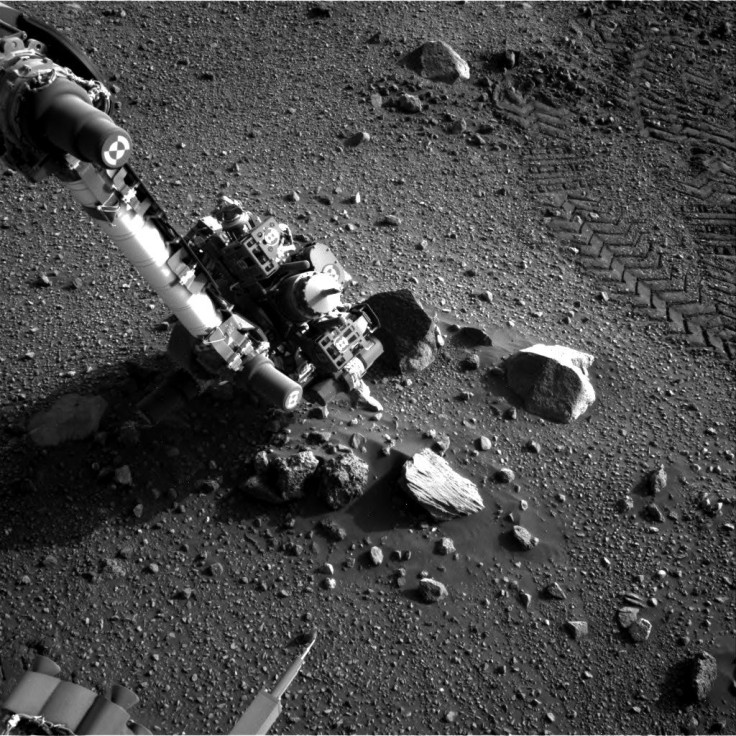NASA Photo Shows Curiosity Rover Examining Alien Face On Mars

A UFO expert claimed that a photo taken by NASA revealed its Curiosity rover examining the remains of an alien on Mars. According to the UFO expert, the image shows a mummified head of an alien that once lived on the Red Planet.
Scott Waring of UFO Sightings Daily came across the photo as he was going through the raw images taken by NASA’s Curiosity rover. The one that caught his attention was the photo taken on the Martian day SOL 2018.
In the photo, the arm of the rover can be seen examining various rocks on the Martian surface. Unlike most of the other rocks in the photo, which appear smooth and featureless, one stands out due to its unique appearance.
Compared to the other rocks, the strange object, which can be seen just below the arm of the rover, has a very rough texture and distinct features that make it look almost like a face of a creature. Based on the size of the rover’s arm, Waring estimated that the face could be about 11 to 15 inches long.
According to Waring the object is actually the head and face of an alien that died on Mars. Based on its appearance, Waring speculated that the alien creature may have suffered a painful death.
As stated by the UFO expert, the alleged alien head appears to have been naturally preserved. Waring believes this has something to do with the alien’s biological composition.
“I do believe that this face is not a statue or sculpture, but is an actual face of an alien species that died long ago,” he wrote in a blog post. “How is that possible? Well, we have double helix DNA and aliens, if more advanced than us, may have three or more strands [of] helix DNA.”
“This means their body will not be so biodegradable as our own, but will sit in place where they died for hundreds or thousands of years,” Waring added.
Due to the state of the alleged alien head when it was photographed, Waring likened it to the mummified corpses from ancient Egypt.





















